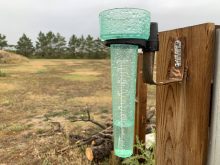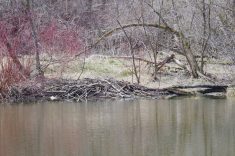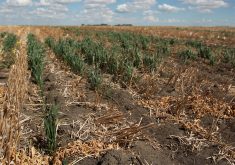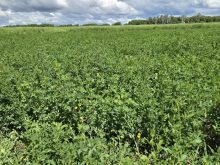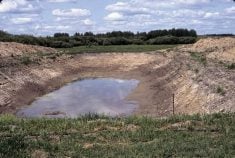MEDICINE HAT — The potential for a return of wildfires in the Peace Country continue to grow as dry conditions in Alberta’s northwestern quarter aren’t anticipated to improve without significant precipitation.
The fires that hit the region started early and spread fast in May 2023 following a dry winter, causing dozens of communities to evacuate and tens of thousands to flee the region.
This winter is seeing a repeat of those conditions develop as the most recent soil moisture data provided by Alberta Agriculture reveal well below normal levels.
Read Also

Feds propose overhaul of chronic wasting disease control program
Chronic Wasting disease control program getting updated by Canadian Food Inspection Agency with feedback encouraged from producers.
Melissa Story, spokesperson for Alberta’s Wildfire Management branch, said preparations are underway but snow accumulations have been scant.
“This winter we’ve seen above average temperatures and below average precipitation across all of the province. Environment Canada is forecasting warming conditions through February, so we are at an elevated fire danger for this time of year than what we typically see,” she said.
“Wildfires are continuing to burn and can flare up under these conditions.”
The usual spring rains is what Alberta Wildfire is keeping its eye on to help reduce that risk.
“One of the biggest factors that will impact our 2024 wildfire season will be the amount of rain we will see in the spring,” said Story. “Even if we see average rainfall in the spring, we’re probably looking at very high to extreme wildfire danger, especially in the northern parts of the province.”
For Peace Country agricultural producers, Story pointed to the FireSmart Farm and Acreage publication as a good resource for farmers and ranchers with tips on how to reduce risks at their operations.
She stressed producers should have a plan in place for evacuations of households and livestock in advance of the fire season.
“The risks to farm animals and livestock can be reduced by preparing and maintaining fuel-reduced areas where livestock can be moved to and helped during a wildfire,” said Story.
“So, using a plowed or heavily grazed field with minimal stubble and grass — if it can be shaded, that’s great, and if there is a water source for animals, that’s also a fantastic thing to take into consideration.”
Story added Alberta Wildfire is working with Alberta Agriculture in developing plans geared toward livestock evacuations.
The Alberta NDP opposition is calling on the provincial government to consider immediately establishing a wildfire task force and begin risk updates in February.
“We’re seeing unprecedented experiences on the land with moisture levels and we’re also seeing record fires burning right now, today, in Alberta,” said environment critic Jodi Calahoo Stonehouse.
Some of the challenges of the early spring fires included lakes that were still frozen, preventing water bombers from being able to access them.
Establishing a task force that provides regular updates before the fire season begins will help residents prepare for a repeat of 2023.
Calahoo Stonehouse also said negotiations with the federal government on insurance programs for agricultural producers should also start now in anticipation of a repeat of last year.
Training of municipal and First Nations fire departments should be ramping up, especially on how to fight such blazes without or limited access to water.
“We have to invest in that and really scale up these innovations to protect Albertans. We know this is coming. We know this has happened in record numbers and the government must prepare to protect Albertans,” said Calahoo Stonehouse.
Alberta currently has 61 carryover wildfires still burning in the northern half of the province with all of them either being held or under control, according to the Alberta Wildfire dashboard.
Contact alex.mccuaig@producer.com




